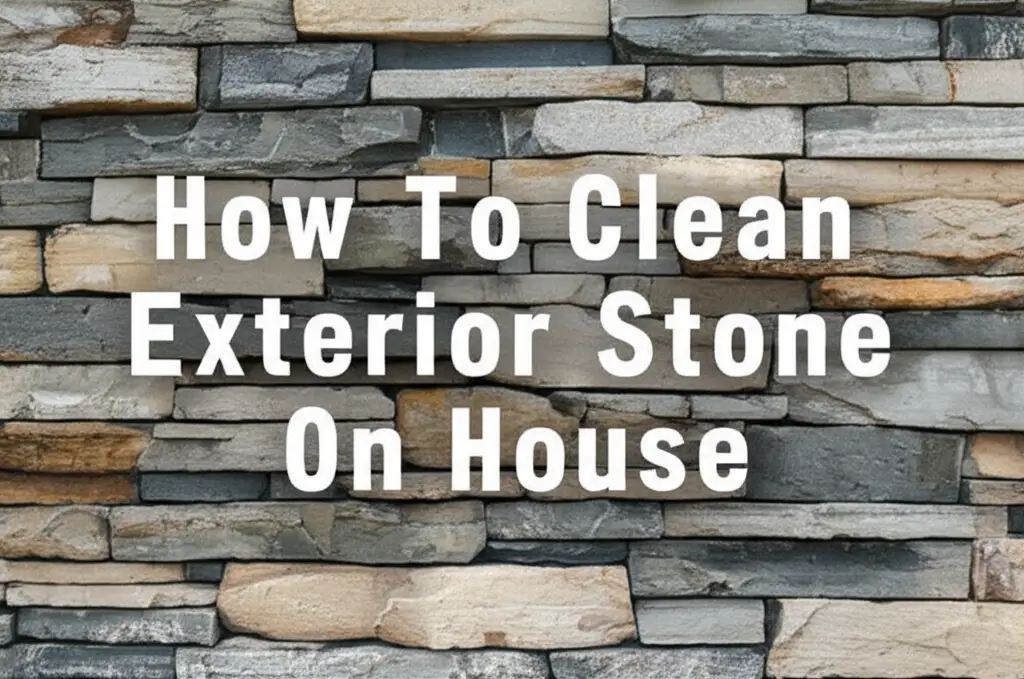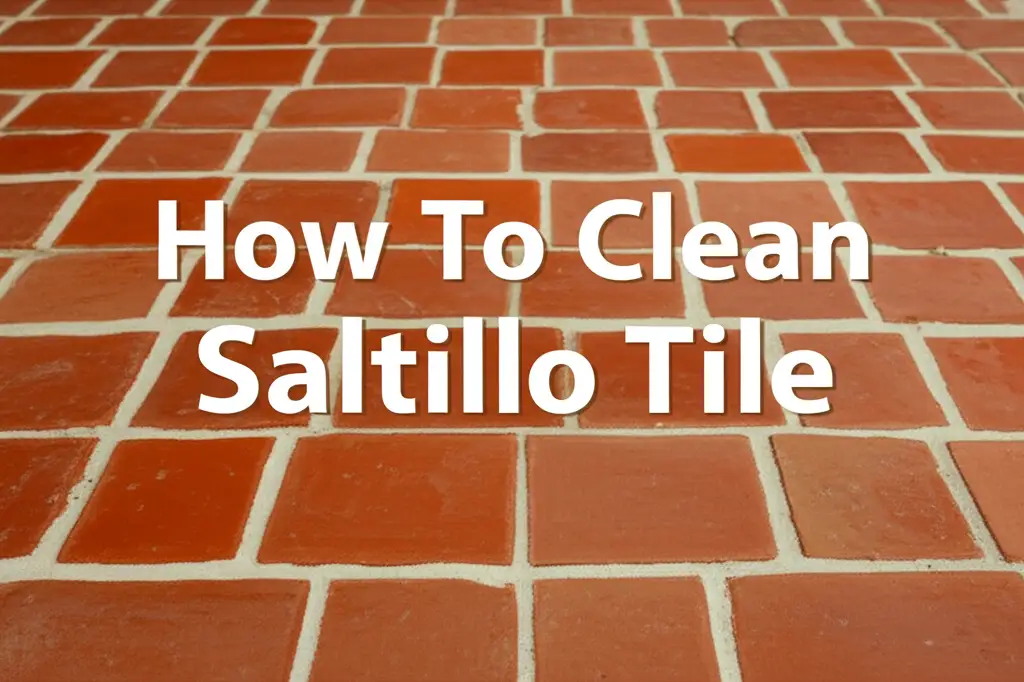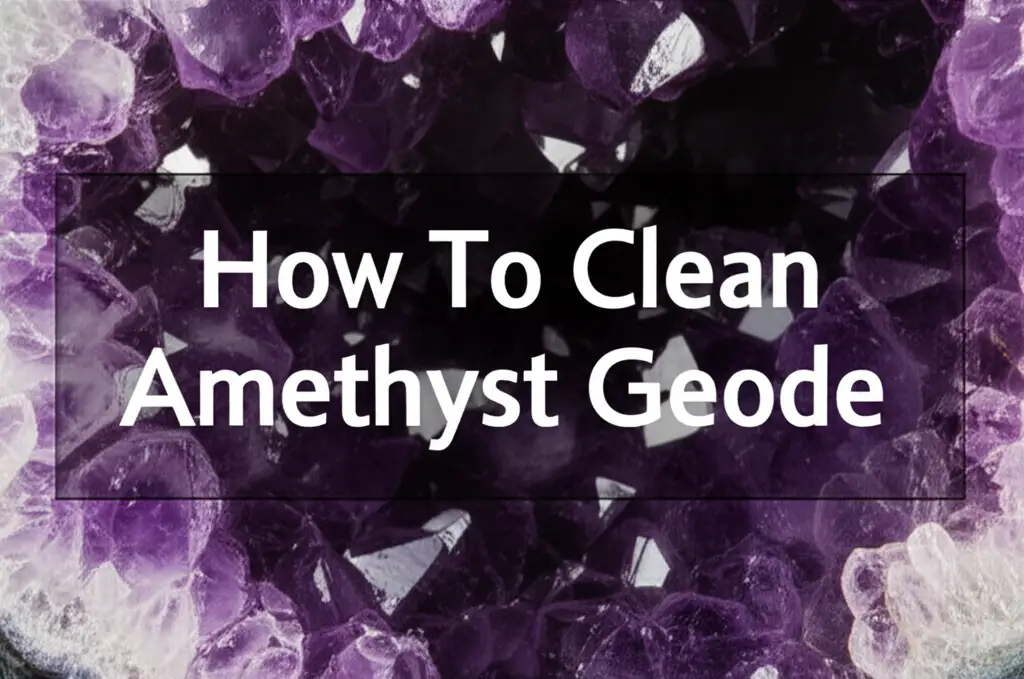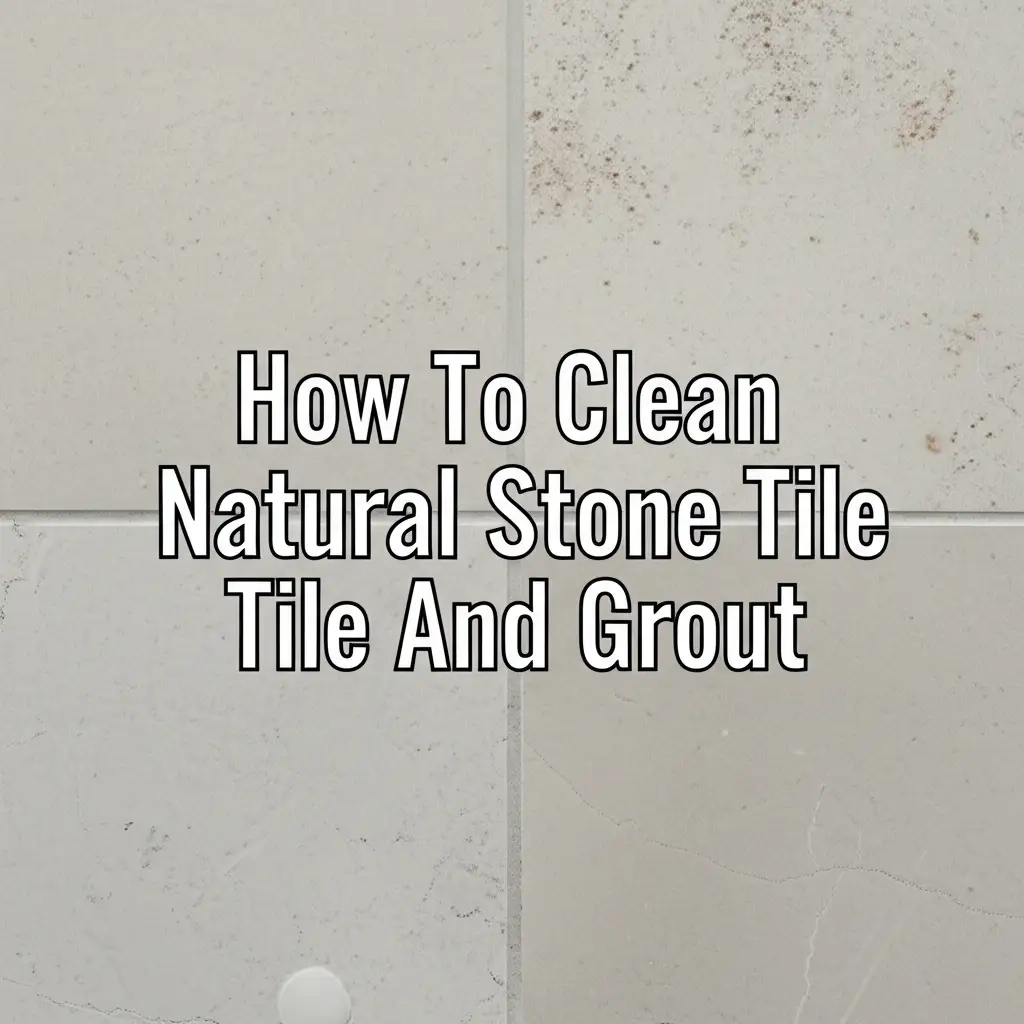· Home Exterior Cleaning · 13 min read
How To Clean Exterior Stone On House

Reclaiming Shine: How To Clean Exterior Stone On House
The exterior stone on your house adds timeless beauty and curb appeal. Over time, however, dirt, grime, mold, mildew, and other environmental elements can accumulate. This build-up makes your beautiful stone look dull and dirty. I understand the frustration of seeing your home’s facade lose its charm.
Cleaning exterior stone is a vital part of home maintenance. It not only restores the aesthetic appeal but also preserves the stone’s integrity. Neglecting regular cleaning can lead to long-term damage and more expensive repairs. This guide covers everything you need to know about how to clean exterior stone on your house. We will explore different stone types, essential tools, safe cleaning methods, and tips for stain removal. You will learn how to make your home’s stone shine again.
Takeaway
Cleaning your exterior stone restores beauty and protects your home.
- Identify your stone type before cleaning.
- Gather the right tools and cleaning solutions.
- Always test cleaners in an inconspicuous area.
- Use gentle methods first, then escalate if needed.
- Regular maintenance prevents severe build-up.
To effectively clean exterior stone on your house, first identify the stone type. Then, choose appropriate, gentle cleaning solutions. Use soft brushes and low-pressure rinsing to remove dirt, mold, and stains. Always test cleaners in a small, hidden area before applying them broadly.
Understanding Your Stone Type for Effective Cleaning
Before you begin to clean exterior stone on your house, you must know your stone type. Different stones react differently to cleaning agents and pressure. Using the wrong method can cause permanent damage. Natural stones like limestone, sandstone, and marble are soft and porous. They are sensitive to acids and high pressure. Granite and slate are harder and less porous. They tolerate more robust cleaning.
Man-made stones, such as cultured stone or stone veneer, also require specific care. These are often made from concrete and artificial pigments. They can be more durable but still need careful handling. Knowing your stone helps you choose the safest and most effective cleaning approach. I recommend a quick check or consultation if you are unsure about your stone.
Differentiating Stone Types
Many types of natural stone exist. Each type has unique characteristics. Limestone and sandstone absorb liquids easily. They stain quickly and scratch easily. Marble offers elegance but is also very soft and vulnerable to acids. Granite and slate are dense. They resist stains better but can still harbor growth.
Man-made stone products offer durability with less maintenance. Still, they can fade or chip if not cleaned properly. Inspect your stone closely. Look for clues like texture, hardness, and how it absorbs water. This helps you select the correct cleaning path.
Essential Tools and Supplies for Stone Cleaning
Having the right tools makes cleaning exterior stone on your house much easier and safer. You do not need fancy equipment for most jobs. Basic items often work best. A garden hose with a spray nozzle is essential for rinsing. Soft-bristle brushes are perfect for scrubbing. You want brushes that clean without scratching the stone surface.
Buckets are useful for mixing solutions. Safety gear like gloves, eye protection, and old clothes protect you. For cleaning solutions, a mild detergent or stone-specific cleaner is often enough. For tougher jobs, you might consider oxygen bleach or specialized stone cleaning products. Always read product labels carefully. These tools prepare you for an effective cleaning session.
Gathering Your Cleaning Arsenal
Your cleaning kit should include more than just water. A good quality, pH-neutral stone cleaner is a smart investment. These cleaners break down dirt and organic growth without harming the stone. For light dirt, a simple mixture of dish soap and water can work wonders. Remember to keep the solution mild.
For stubborn mold or mildew, specific solutions are necessary. I often recommend oxygen bleach because it is effective and generally safer for stone than chlorine bleach. Always have plenty of clean water for rinsing nearby. This helps you flush away dirt and cleaning agents. Having these supplies ready saves time and effort during the cleaning process.
Step-by-Step Guide to Cleaning Exterior Stone
Cleaning exterior stone on your house involves a systematic approach. This ensures thoroughness and prevents damage. First, clear the area around the stone. Remove any plants, furniture, or decor. This protects them from cleaning solutions and gives you clear access. Next, pre-rinse the stone with a garden hose. This removes loose dirt and debris. It also saturates the stone, which prevents cleaning solutions from absorbing too deeply.
Apply your chosen cleaning solution. Work in small sections to prevent the solution from drying on the stone. Scrub gently with a soft-bristle brush. Allow the solution to dwell for the recommended time. Finally, rinse the stone thoroughly with clean water. Make sure no cleaning agent remains. Repeat this process until the stone is clean. This simple routine makes a big difference.
The Cleaning Process in Detail
Start by protecting surrounding areas. Cover plants with plastic sheeting if using stronger cleaners. Use painter’s tape to protect adjacent siding or trim. Then, begin your pre-rinse. A strong spray from a garden hose can dislodge a lot of grime. This step is often overlooked but is very important.
When applying the cleaner, use a pump sprayer for even distribution. Work from the bottom up to avoid streak marks. Scrub in circular motions or with the grain of the stone. This helps lift embedded dirt. For the rinse, work from the top down. This directs dirty water away from already clean areas. Ensure all suds are gone. You might need to rinse several times. For specific guidance on cleaning without a pressure washer, you can learn more about how to clean the outside of your house without a pressure washer.
Tackling Common Stone Stains: Mold, Mildew, and Efflorescence
When you clean exterior stone on your house, you will likely encounter stubborn stains. Mold and mildew are common, especially in damp, shaded areas. They appear as black, green, or fuzzy patches. Efflorescence is another common issue. It looks like a white, powdery residue. This happens when water evaporates from the stone, leaving behind mineral salts. Each stain needs a specific approach for effective removal.
Understanding the cause helps you choose the right cleaning agent. Addressing these stains not only improves appearance but also prevents further deterioration of the stone. Ignoring them can lead to deeper staining or structural issues over time. I find it satisfying to see these unsightly blemishes disappear.
Removing Mold and Mildew
For mold and mildew, avoid harsh chemicals like chlorine bleach on porous stone types. Chlorine bleach can damage stone and cause discoloration. Instead, use an oxygen bleach solution. Mix oxygen bleach powder with water according to package directions. Apply it to the affected areas. Let it sit for 15-30 minutes, allowing it to penetrate. Scrub gently with a soft brush, then rinse thoroughly.
For very stubborn mold, a dedicated mold remover for stone might be necessary. Always check the product’s compatibility with your specific stone type. Ensure proper ventilation and wear protective gear. For a deeper dive into this topic, refer to information on how to clean mold off natural stone.
Cleaning Efflorescence
Efflorescence requires a different strategy. Do not just scrub it, as this can spread the salts. First, try dry brushing the white powder away. If that does not work, a light rinse with plain water might help. For persistent efflorescence, you may need a mild acidic cleaner specifically designed for stone. These cleaners dissolve the mineral deposits.
However, use acidic cleaners with extreme caution on soft stones like marble or limestone. They can etch the surface. Always test in an inconspicuous area first. After applying, scrub lightly and rinse immediately and thoroughly. Understanding the source of the moisture causing efflorescence is key to preventing its return.
Dealing with Mortar or Grout Stains
Sometimes, you might find mortar or grout residue on your stone. This often occurs after construction or repair work. Cleaning these can be tricky because mortar is cement-based. For fresh mortar, a stiff brush and water can often remove it. If the mortar has dried, special cleaners are needed.
Avoid strong acids if your stone is acid-sensitive. There are specialized products designed to dissolve mortar haze without harming stone. Always follow product instructions carefully. You can find more detailed advice on how to clean mortar off stone without acid. Similarly, for general cleaning of natural stone with grout, you might find tips on how to clean natural stone tile and grout.
Pressure Washing Exterior Stone: Pros, Cons, and Safety
Pressure washing can be a powerful tool when you clean exterior stone on your house. It quickly removes stubborn dirt, grime, and even some stains. For hard, dense stones like granite or slate, a low-pressure wash can be very effective. The force of the water blasts away years of build-up. This method saves time and physical effort compared to manual scrubbing.
However, pressure washing also carries risks. High pressure can damage soft or porous stones. It can erode mortar joints, chip stone, or force water into undesirable places behind the facade. You must use caution and the correct settings. I always stress the importance of understanding your equipment and your stone before turning on a pressure washer.
Safe Pressure Washing Practices
If you decide to pressure wash, choose the right nozzle and pressure setting. A wide-angle nozzle (like a 40-degree or white tip) provides a gentler spray. Keep the pressure between 500-1200 PSI for most stone. Start with the lowest pressure setting. Stand several feet away from the stone. Move closer slowly until you find an effective but safe distance.
Always spray at a downward angle. This helps push water and debris away from the house. Never aim directly into mortar joints. Overlapping passes ensure even cleaning. Avoid holding the spray in one spot too long. This prevents damage. If you are unsure, test a small, hidden area first.
Cleaning Stone Without a Pressure Washer
Not all exterior stone needs or tolerates a pressure washer. You can still clean exterior stone on your house effectively without one. Manual cleaning methods are often gentler and safer for delicate stone types. This approach requires more elbow grease but gives you greater control. It is perfect for detailed work or sensitive areas.
This method relies on soaking, scrubbing, and rinsing. It minimizes the risk of damage to mortar or the stone surface itself. For those preferring gentler methods, or for specific stone types, manual cleaning is the best choice. It can be a bit more time-consuming. However, the results are worth the effort for preserving your stone’s beauty.
Manual Cleaning Techniques
Start by liberally wetting the stone with a garden hose. This loosens dirt and prepares the surface. Apply a stone-safe cleaning solution. You can use a mild dish soap solution or a specialized stone cleaner. Use a bucket and sponge or a low-pressure garden sprayer. Let the solution sit for a few minutes. This allows it to break down grime.
Next, use a soft-bristle brush or a non-abrasive scrubbing pad. Gently scrub the stone surface. Work in small sections. Pay attention to crevices where dirt accumulates. Once scrubbed, rinse the area thoroughly with your garden hose. Ensure all cleaning residues are gone. Repeat for the entire stone area. This method is safe and effective for most common stains.
Maintaining Clean Exterior Stone
Cleaning your exterior stone is only half the battle. Regular maintenance is key to keeping it looking its best. It also helps extend the life of your stone. Establishing a routine prevents heavy build-up of dirt, mold, and mildew. This means less intense cleaning sessions in the future. Small, frequent efforts yield big results.
Maintenance involves more than just cleaning. It also includes inspecting your stone regularly. Look for any new stains, cracks, or signs of deterioration. Early detection allows for prompt action. This proactive approach saves you time and money in the long run. I find that prevention is always better than a cure.
Routine Stone Care
Aim to clean exterior stone on your house at least once a year. If you live in a very humid or dusty area, you might need to clean more often. A simple rinse with a garden hose every few months can prevent significant dirt accumulation. This washes away loose debris and pollen. After cleaning, consider applying a stone sealer.
A sealer creates a barrier on the stone surface. It helps repel water, oil, and other contaminants. This makes the stone less prone to staining and easier to clean in the future. Choose a breathable sealer specifically designed for exterior natural stone. Always follow the manufacturer’s instructions for application. Sealing is an excellent protective measure.
Preventing Future Stains
Controlling moisture is crucial for preventing mold and mildew. Trim back any bushes or trees that keep the stone shaded and damp. Ensure proper drainage around your house. Direct rainwater away from the stone foundation. Fix any leaky gutters or downspouts. These issues can direct water onto the stone, promoting growth.
For efflorescence, investigate the source of moisture. This might involve improving drainage or addressing groundwater issues. Regular inspection for early signs of problems helps. Addressing these underlying issues prevents recurring stains. Your efforts will keep your home’s stone pristine.
Frequently Asked Questions
What is the best way to remove green algae from exterior stone?
The best way to remove green algae is with an oxygen bleach solution. Mix the powder with water, apply it to the affected area, and let it sit for about 15-30 minutes. Then, gently scrub with a soft brush and rinse thoroughly with clean water. This method effectively kills algae without harming most stone types.
Can I use household bleach to clean my outdoor stone?
Using household chlorine bleach is generally not recommended for outdoor stone. It can discolor certain types of natural stone, especially porous ones like limestone or marble. Bleach can also damage surrounding plants or landscaping. Oxygen bleach is a safer and more effective alternative for cleaning organic stains.
How often should I clean my house’s exterior stone?
You should clean your house’s exterior stone at least once a year. In areas with high humidity, heavy tree cover, or significant pollution, you might need to clean it every six months. Regular rinsing with a garden hose every few months also helps prevent major dirt and grime build-up, making deeper cleans easier.
Is pressure washing safe for all types of exterior stone?
No, pressure washing is not safe for all types of exterior stone. High pressure can damage soft, porous stones like limestone, sandstone, or marble. It can also erode mortar joints. For harder stones like granite or slate, use a low-pressure setting (500-1200 PSI) and a wide-angle nozzle. Always test a small area first.
What causes white stains on exterior stone, and how do I remove them?
White stains on exterior stone are usually efflorescence, caused by mineral salts left behind as water evaporates from the stone. To remove them, first try dry brushing. If persistent, use a mild acidic cleaner specifically for stone. Exercise extreme caution with acidic cleaners on soft stones, and always rinse thoroughly immediately after.
Conclusion
Cleaning exterior stone on your house is an important maintenance task. It restores your home’s curb appeal and protects its structural integrity. You have learned to identify your stone type, gather the right tools, and follow a step-by-step cleaning process. We covered specific solutions for common issues like mold, mildew, and efflorescence. We also discussed the pros and cons of pressure washing versus manual cleaning.
By following these guidelines, you can safely and effectively bring your exterior stone back to life. Remember, regular maintenance and proactive care prevent major problems. Invest time in properly cleaning and maintaining your stone. This ensures its beauty lasts for many years. Start your stone cleaning project today. Your home will thank you for it!
- exterior stone cleaning
- natural stone cleaning
- house stone maintenance




